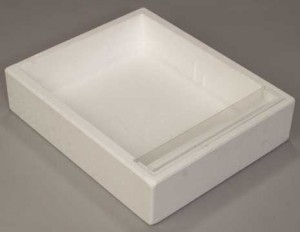Lessons for 2012
I was recently asked by an experienced beekeeper ‘what did you learn in 2012’? I have had a lot of time to reflect on that question, as I prepare my hives for the Winter (see a brief note on that task below.)
This year proved to be a banner year in the apiaries. I created several Nuc’s in February that all became nice, strong colonies. I sold all of them but one, as I wanted to see how long the queen remained a viable later on. There are two risks with creating a Nuc so early. One is the weather – this past Winter posed no problem here. The second is the possible lack of drones. This second issue may mean that the queens from those early Nucs were not mated enough to make it as long as they otherwise might. In my mind, there is no real way to determine this except to keep the hive for three years and make sure the queen doesn’t falter early. So, no likely update on this experiment until 2015 (or earlier if it turned out to be a failure!)
I also learned that, under good conditions, you can take more than 3 deep frames from a Deep/Med setup for a Nuc without slowing them down or even stopping them from swarming. In all likelihood, I will simply create more than one Nuc from my strong hives in 2013 (I have increased my Nuc boxes by a lot, to prepare for this possibility.) The key here is to not take so much that they flounder for a month trying to rebuild. So, instead of taking more than 3 at Nuc creation time, I’ll probably take 3 one weekend and another 3 some three or four weekends later.
The painful lesson centered on supers. I will never leave 4 or more supers of honey on a hive. My banner hive (out of 30 or so honey producing hives this past Spring) drew out and capped a little under 4 supers (2 shallows and 2 mediums) of honey. I was struggling during these months, trying to keep up with my bees, and never got around to pulling the supers until sometime in June. I cannot be sure, but it appears that the hive swarmed and the queen did not make it back (another lesson here is to check for a single frame of brood at every inspection). The hive was robbed out with a bit of wax moth and SHB in it, once I got to it in June. I deal with losses pretty well, but this one hurt. I had big plans for that queen/bloodline. I was also excited about 4 supers of honey! At any rate, I now know that I can never be sure that I will get to every hive in a timely manner. So, I will be unlikely to leave more than 3 supers on a hive at any given time.
For Winter Nuc’s, I found that early August is about the latest I should start them. I tested a few in mid to late-August and they were unable to fill out the second Nuc body with honey. I’ll let them make a go of it this Winter (as a test), but I’d prefer that they had more honey (I may give one of them a medium nuc of honey from one of my bank hives.)
Winter Prep
Winter prep for me basically involves a few simple tasks, none of which require a full hive breakdown. The first thing I check is honey. I pull a few frames from the top hive body (for me, this is almost always a Medium) and make sure they have a fully capped super. The second thing that I do is spot check the bottom super by pulling one of the center frames and making sure that I have capped brood. All the while, I am looking at as many bees as I can and making sure that nothing is amiss (currently, my main way to judge this is by deformed wing virus.) I then level the hive off (in case is shifted during the year) and make sure it is slightly leaning forward. Finally, I put on an entrance reducer (and a cover, if the hive has a screened bottom board – I stopped using these but still have a dozen or so out in the yards.)

